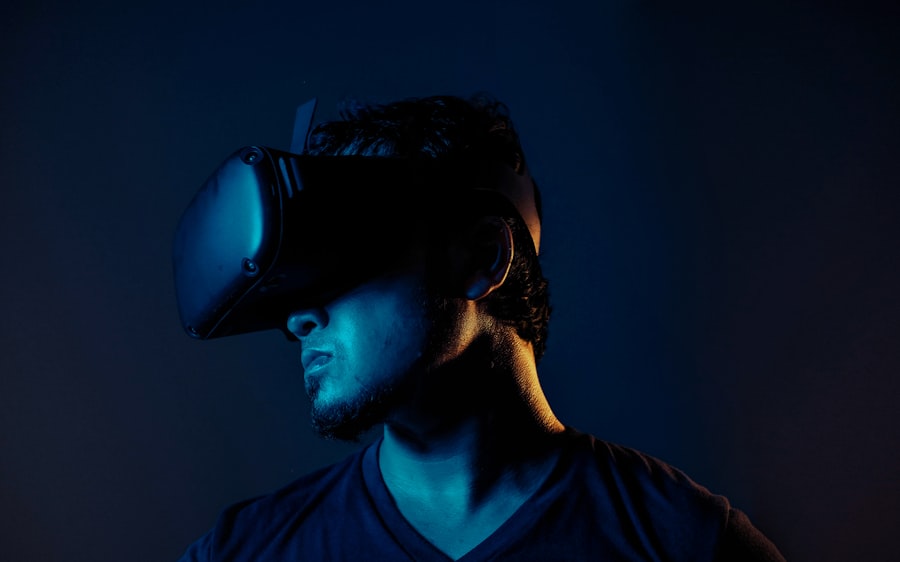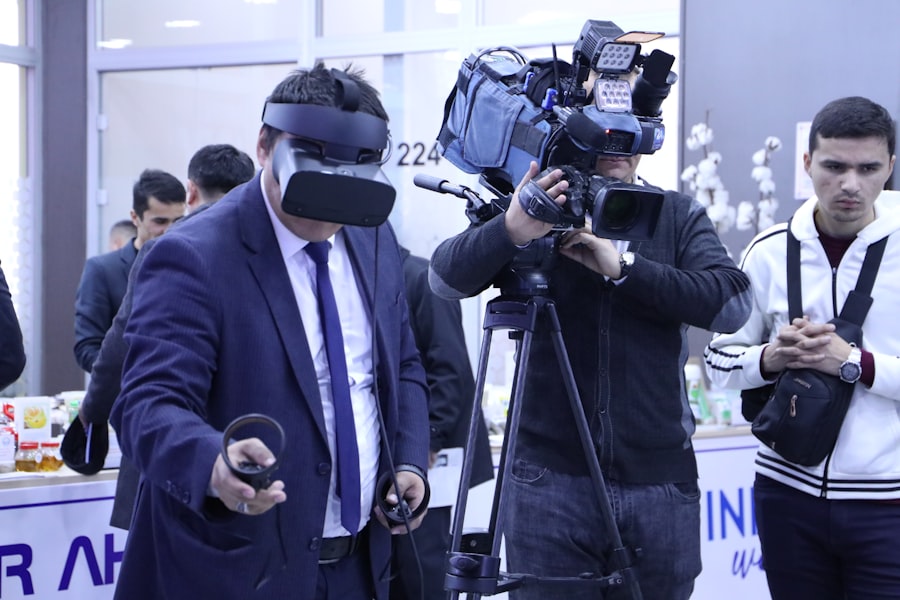The concept of the metaverse has evolved significantly over the past few years, transitioning from a niche idea in science fiction to a burgeoning reality that captivates the imagination of technologists, gamers, and entrepreneurs alike. The term “metaverse” itself, popularized by Neal Stephenson’s 1992 novel “Snow Crash,” refers to a collective virtual shared space that is created by the convergence of virtually enhanced physical reality and physically persistent virtual reality. This digital universe is not merely a single platform but a vast network of interconnected virtual environments where users can interact with each other and digital objects in real-time.
The rise of the improbable metaverse is characterized by its unexpected growth, fueled by advancements in technology, increased internet accessibility, and a cultural shift towards immersive experiences. As the metaverse gains traction, it has attracted significant investment from major tech companies, including Meta (formerly Facebook), Microsoft, and Epic Games. These corporations are pouring billions into developing the infrastructure necessary for a fully realized metaverse, which includes virtual reality (VR) and augmented reality (AR) technologies.
The COVID-19 pandemic accelerated this trend, as remote work and social distancing measures pushed individuals to seek alternative ways to connect and engage with one another. Virtual events, online gaming, and social VR platforms surged in popularity, demonstrating the potential of the metaverse to serve as a new frontier for social interaction, entertainment, and commerce. This unexpected rise has led to a reimagining of how we perceive digital spaces and their role in our daily lives.
Key Takeaways
- The rise of improbable metaverse is reshaping the virtual reality landscape
- Unconventional virtual reality experiences are pushing the boundaries of traditional VR
- The intersection of fantasy and reality in the metaverse is creating new immersive experiences
- Unexpected applications of virtual reality are revolutionizing industries and experiences
- Navigating the unlikely realms of virtual reality requires an open mind and willingness to explore
Unconventional Virtual Reality Experiences
Virtual reality has traditionally been associated with gaming and entertainment, but its applications have expanded into unconventional realms that challenge our understanding of what VR can achieve. One notable example is the use of VR in education. Institutions are increasingly adopting immersive technologies to create engaging learning environments that transcend the limitations of traditional classrooms.
For instance, students can explore ancient civilizations through virtual field trips or conduct complex scientific experiments in simulated laboratories without the risks associated with real-life experimentation. This innovative approach not only enhances learning outcomes but also caters to diverse learning styles, making education more accessible and inclusive. Another unconventional application of VR is in mental health treatment.
Therapists are utilizing virtual environments to help patients confront their fears and anxieties in a controlled setting. Exposure therapy, for instance, allows individuals to face phobias—such as heights or public speaking—by immersing them in realistic simulations that gradually increase in intensity. Research has shown that this method can be more effective than traditional therapy techniques, as it provides patients with a safe space to practice coping strategies and desensitize themselves to their triggers.
Furthermore, VR is being explored as a tool for mindfulness and relaxation, offering users guided meditations in serene virtual landscapes that promote mental well-being.
The Intersection of Fantasy and Reality in the Metaverse

The metaverse represents a unique intersection between fantasy and reality, blurring the lines between what is possible in the physical world and what can be imagined in a digital realm. This fusion allows users to create avatars that embody their ideal selves or explore fantastical worlds that defy the laws of physics. For example, platforms like Second Life and VRChat enable users to design their own environments and experiences, fostering creativity and self-expression in ways that are often unattainable in real life.
This ability to transcend physical limitations invites individuals to explore identities and narratives that resonate with them on a personal level. Moreover, the metaverse serves as a canvas for storytelling that transcends traditional media formats. Interactive narratives allow users to become active participants in the story rather than passive observers.
Games like “The Elder Scrolls V: Skyrim” or “The Legend of Zelda: Breath of the Wild” exemplify this trend by offering expansive worlds filled with rich lore and opportunities for exploration. Players can forge their own paths, make choices that impact the narrative, and engage with characters in meaningful ways. This participatory approach to storytelling not only enhances immersion but also fosters a deeper emotional connection between users and the narratives they inhabit.
The Unexpected Applications of Virtual Reality
| Application | Metrics |
|---|---|
| Healthcare | Reduction in pain perception by 24% |
| Education | Improvement in retention rates by 80% |
| Training | Reduction in training time by 40% |
| Therapy | Reduction in anxiety levels by 30% |
Beyond entertainment and education, virtual reality is finding unexpected applications across various industries, revolutionizing how businesses operate and engage with customers. In real estate, for instance, VR technology allows potential buyers to take virtual tours of properties without ever stepping foot inside them. This capability not only saves time but also enables clients to explore multiple listings from the comfort of their homes.
Real estate agents can create immersive experiences that showcase properties in their best light, providing clients with a comprehensive understanding of the space before making a decision. Healthcare is another sector experiencing a transformation through VR applications. Medical professionals are using virtual simulations for training purposes, allowing students to practice surgical procedures or patient interactions in a risk-free environment.
This hands-on experience is invaluable for honing skills and building confidence before working with real patients. Additionally, VR is being utilized for pain management during medical procedures or rehabilitation therapies, providing patients with distraction techniques that reduce anxiety and discomfort. These unexpected applications highlight the versatility of virtual reality as a tool for innovation across diverse fields.
As users navigate the unlikely realms of virtual reality, they encounter unique challenges and opportunities that shape their experiences within these digital landscapes. One significant aspect is the need for user agency and control over their virtual environments. In many cases, users are given tools to customize their experiences, from designing avatars to creating entire worlds.
This level of agency fosters a sense of ownership and investment in the virtual space, encouraging users to explore and experiment without fear of judgment or failure. However, navigating these realms also raises questions about safety and ethics within virtual environments. As users engage with others in shared spaces, issues such as harassment or inappropriate behavior can arise.
Additionally, concerns about data privacy and security loom large as users share personal information within these platforms. Striking a balance between user freedom and safety is crucial for fostering healthy communities within the metaverse.
Challenging the Boundaries of Virtual Worlds

Seamless Transitions and Interoperability
One of the most significant advancements in the metaverse is the development of cross-platform experiences. This allows users to transition smoothly between different virtual environments, carrying their avatars and assets with them. Interoperability between various VR platforms enables users to create a cohesive identity within the metaverse.
Furthermore, advancements in haptic feedback technology are revolutionizing how users interact with virtual environments. By providing tactile sensations that mimic real-world interactions, haptic devices enhance immersion and realism within virtual environments.
Implications for Training Simulations
This technology has far-reaching implications beyond gaming experiences. It also has significant potential for training simulations in fields like aviation or military operations, where realistic feedback is essential for skill development.
Unlikely Collaborations in the Metaverse
The metaverse has become a fertile ground for unlikely collaborations between artists, technologists, businesses, and communities. These partnerships often yield innovative projects that blend diverse perspectives and expertise to create unique experiences. For example, musicians are exploring ways to host live concerts within virtual spaces, allowing fans from around the world to attend performances without geographical constraints.
Platforms like Roblox have hosted virtual concerts featuring popular artists such as Lil Nas X and Travis Scott, drawing millions of viewers who engage with the music in interactive ways. Additionally, brands are recognizing the potential of the metaverse as a marketing tool and are collaborating with creators to develop immersive advertising campaigns that resonate with audiences on a deeper level. Fashion brands like Gucci have ventured into virtual fashion shows within platforms like Decentraland, showcasing digital clothing that users can purchase for their avatars.
These collaborations not only expand brand reach but also challenge traditional notions of consumerism by introducing new forms of digital ownership.
The Future of Improbable Metaverse: What to Expect
Looking ahead, the future of the improbable metaverse holds immense potential for further innovation and transformation across various sectors. As technology continues to advance—particularly in areas such as artificial intelligence (AI), blockchain, and 5G connectivity—the possibilities for creating richer, more immersive experiences will expand exponentially. AI-driven avatars capable of learning from user interactions could enhance social dynamics within virtual spaces, while blockchain technology may facilitate secure transactions and ownership verification for digital assets.
Moreover, as more individuals embrace remote work and digital collaboration becomes increasingly normalized, the metaverse may evolve into a primary platform for professional interactions. Virtual offices could become commonplace, allowing teams to collaborate seamlessly regardless of physical location while fostering a sense of presence that traditional video conferencing lacks. This shift could redefine workplace culture and productivity norms as organizations adapt to new ways of engaging employees.
In conclusion, the improbable metaverse is not merely an abstract concept but an evolving reality that challenges our perceptions of digital interaction and community building. As we continue to explore its vast potential through unconventional experiences and unexpected applications, we stand on the brink of a new era where fantasy intertwines with reality in ways we have yet to fully comprehend. The journey into this uncharted territory promises to be as exciting as it is transformative.
If you’re interested in exploring the concept of parallel worlds within the metaverse, you may want to check out the article “Parallel Worlds in the Megaverse: Fact or Fiction?” This article delves into the intriguing idea of multiple realities existing within the metaverse and whether this is a possibility or simply a work of fiction. It’s a fascinating read that will challenge your perception of virtual worlds.
FAQs
What is the Improbable Metaverse?
The Improbable Metaverse is a concept that refers to a virtual, interconnected space where people can interact, create, and engage in various activities using virtual reality and augmented reality technologies.
How does the Improbable Metaverse differ from the traditional internet?
The Improbable Metaverse differs from the traditional internet in that it aims to create a more immersive and interactive experience for users, allowing them to engage with digital environments and other users in a more lifelike manner.
What are some potential applications of the Improbable Metaverse?
Potential applications of the Improbable Metaverse include virtual meetings and conferences, immersive gaming experiences, virtual tourism, virtual shopping experiences, and virtual social interactions.
What technologies are driving the development of the Improbable Metaverse?
Technologies driving the development of the Improbable Metaverse include virtual reality (VR), augmented reality (AR), artificial intelligence (AI), blockchain, and 3D modeling and simulation technologies.
What are some challenges and limitations of the Improbable Metaverse?
Challenges and limitations of the Improbable Metaverse include technological barriers, such as the need for high-quality VR and AR hardware, as well as concerns related to privacy, security, and digital rights within virtual environments.

Leave a Reply